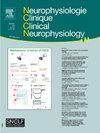使用监督机器学习的基于心电图(ECG)的癫痫检测
IF 2.4
4区 医学
Q2 CLINICAL NEUROLOGY
Neurophysiologie Clinique/Clinical Neurophysiology
Pub Date : 2025-08-21
DOI:10.1016/j.neucli.2025.103098
引用次数: 0
摘要
我们利用心电图(ECG)的自动描述和机器学习进行了一项试点研究,该研究考虑了ECG复合体的所有组成部分来检测癫痫发作。主要结果是评估该方法的可行性。次要结果是确定最有效的机器学习算法。方法:我们筛选EPICARD队列中接受视频脑电图监测的患者的心电图记录。选取32例患者的47次癫痫发作。保留癫痫发作前后90分钟的epoch。每个心电图被转换成一个心跳序列,按照P-Q-R-S-T序列建模。计算了测量心跳内外分量时间变化的导数量,分别为δX和ΔX。我们的算法在一个滑动窗口内监测3到60次连续的心跳。当超过N次心跳被归类为癫痫发作时(N次在3到20之间),就会触发警报。心跳被训练有素的神经生理学家归类为癫痫发作。我们使用自动机器学习(auto-ML)平台(Dataiku & Flaml)来评估六种不同的算法:Random Forest、LightGBM、XGBoost、Decision Tree、K-Nearest Neighbors和Extra Trees。结果无论采用何种验证方法,Extra Trees算法都能提供最佳的癫痫检测性能。虽然较长的窗口模型提高了检测灵敏度,但这样做的代价是延迟识别。一个模型分析了60次心跳,触发次数为20次,灵敏度为86%,特异性为99.9%。自动描述是可靠的,但是误报率仍然很高(每小时1.5次)。未来的工作应侧重于个性化检测算法,以提高这一虚警率。本文章由计算机程序翻译,如有差异,请以英文原文为准。
Electrocardiogram (ECG)-based seizure detection using supervised machine-learning
Background
We conducted a pilot study utilizing automatic delineation of electrocardiogram (ECG) and machine learning that considered all components of the ECG complex for seizure detection. The primary outcome was to assess the feasibility of this method. The secondary outcome was to identify the most effective machine learning algorithm.
Methods
We screened ECG recordings from patients included in the EPICARD cohort who underwent video-electroencephalogram monitoring. A total of 47 seizures from 32 patients were selected. Epochs of 90 min surrounding the seizures were retained. Each ECG was converted into a sequence of heartbeats modeled as a P-Q-R-S-T succession. Derivative quantities measuring time variations between the inner and outer components of heartbeats were computed, designated as δX and ΔX. Our algorithm monitored 3 to 60 successive heartbeats within a sliding window. An alarm was triggered when more than N heartbeats were classified as in-seizure (N between 3 and 20). Heartbeats were categorized as in-seizure by trained neurophysiologists. We used automated machine learning (auto-ML) platforms (Dataiku & Flaml) to assess six different algorithms: Random Forest, LightGBM, XGBoost, Decision Tree, K-Nearest Neighbors, and Extra Trees.
Results
The Extra Trees algorithm provided the best seizure detection performance regardless of the validation method used. Although longer-window models enhance detection sensitivity, they do so at the cost of delayed identification. A model analyzing 60 heartbeats with a trigger of 20 achieved 86 % sensitivity and 99.9 % specificity.
Discussion
Automatic delineation is reliable, however the false alarm rate remains high (1.5 per hour). Future work should focus on personalizing detection algorithms to improve this false alarm rate.
求助全文
通过发布文献求助,成功后即可免费获取论文全文。
去求助
来源期刊
CiteScore
5.20
自引率
3.30%
发文量
55
审稿时长
60 days
期刊介绍:
Neurophysiologie Clinique / Clinical Neurophysiology (NCCN) is the official organ of the French Society of Clinical Neurophysiology (SNCLF). This journal is published 6 times a year, and is aimed at an international readership, with articles written in English. These can take the form of original research papers, comprehensive review articles, viewpoints, short communications, technical notes, editorials or letters to the Editor. The theme is the neurophysiological investigation of central or peripheral nervous system or muscle in healthy humans or patients. The journal focuses on key areas of clinical neurophysiology: electro- or magneto-encephalography, evoked potentials of all modalities, electroneuromyography, sleep, pain, posture, balance, motor control, autonomic nervous system, cognition, invasive and non-invasive neuromodulation, signal processing, bio-engineering, functional imaging.

 求助内容:
求助内容: 应助结果提醒方式:
应助结果提醒方式:


